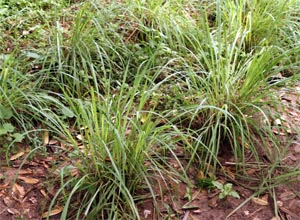
Lemongrass is an aromatic tropical grass cultivated primarily for culinary use. There are two of the 55 species in the genus Cymbopogon that are used almost interchangeably as lemongrass. The so-called East-Indian lemongrass (C. flexuosus) (also known as cochin or Malabar grass) is native to India, Sri Lanka, Burma and Thailand, while West-Indian lemongrass (C. citratus), is of a Malaysian origin and is more typically used for cooking. When crushed, the fragrance resembles the scent of lemon. Extensive breeding programs have developed many varieties of lemongrass but few are available in North America. The related citronella grass (C. nardus) is the source of commercial citronella oil, which is used in soaps, as a mosquito repellent in insect sprays and candles and in aromatherapy.
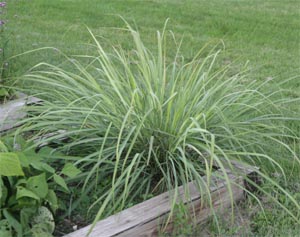
This perennial herb is widely grown in the tropics and subtropics but can also be grown as an annual in cooler climates. The plants grow in dense clumps up to 6 feet in diameter, with leaves up to 3 feet long. They require warm, humid conditions in full sun to thrive. The coarse, strap-like leaves are ½-1” wide, finely serrated on the edges (rough enough to cut skin), tapered at the end and have gracefully drooping tips. It is not as attractive as many other ornamental grasses but clumps can develop into imposing specimens. Plants will flower with a branched cluster of stalked flowers but usually not when grown as an annual. These are not ornamental and rarely set seed.
Grow lemongrass in containers or as an annual during the growing season. Plant in full sun in moist, loam soil, preferably with high organic content. Place outside as soon as the danger from frost is past. Clumps will grow slowly until the heat and humidity of summer arrives then the plants will increase in size dramatically. This plant requires a great deal of water, so water regularly if rainfall is sparse. Frost will kill or severely damage the plants, so harvest or dig before overnight temperatures get to freezing.
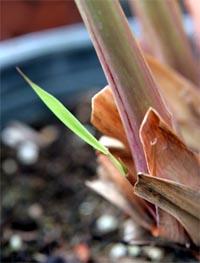
Lemongrass has essentially no pest problems in the Midwest.
Propagate lemongrass by root or plant division. You may be able to root grocery store specimens in water or potting medium if enough root plate is left on the stem. Roots should form within two or three weeks if they are going to.
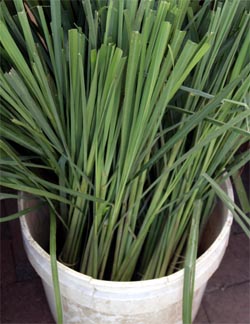
To harvest, cut stems at ground level when the stems are about ½” thick. Push an outside stem to the side, then twist and pull it off or cut off with a knife. Discard the leaves and woody outer layers. The entire clump can be harvested (such as at the end of the season just before the first frost), or selected stems can be removed from the edges of the clump.
When harvested, the bulbous stems look like scallions, but are pale yellow and more fibrous once the woody outer layers have been removed. The whole stalk itself is too hard to be eaten, so it is usually smashed and simmered in liquid to impart the lemony flavor to the dish, then removed before serving.
If you don’t have your own clump of lemongrass, you may be able to find it for sale in Asian markets, some grocery stores that stock specialty items, and at some farmer’s markets. Select firm stalks with fresh to slightly dry tops and a somewhat heavy and moist base.

Lemongrass is an important culinary herb in tropical Asia (in India it is cultivated as a medical herb and for perfumes, but not used as a spice). Lemongrass has a light, refreshing, lemony flavor without the bitterness that lemon rind can have and with a hint of ginger. It is a staple in Thai cuisine, used to flavor soups, fish, seafood stews, curry and sauces. It is also an important flavoring in Vietnam, Cambodia and Indonesia, being used with poultry, fish and seafood dishes.
The main constituent of both species of lemongrass, citral, has a refreshing, lemony smell is also a strong, cleansing antiseptic. The oil is steam-distilled from the fresh or partly dried stems and is used in low-cost citrus soaps, perfumes and cleaning agents. C. citratus contains enough myrcene to make the oil susceptible to oxidative polymerization. The oil from C. flexuosus contains less myrcene and therefore has a longer shelf life, so it is dominantly used in the perfume industry.
– Susan Mahr, University of Wisconsin
Ask Your Gardening Question
If you’re unable to find the information you need, please submit your gardening question here:





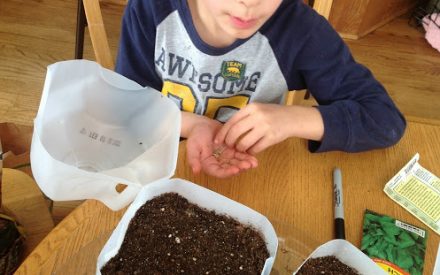 Seed Starting
Seed Starting Growing Vegetables at Home: Questions and Answers
Growing Vegetables at Home: Questions and Answers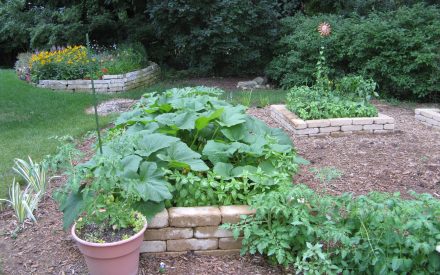 Growing Vegetables in Containers
Growing Vegetables in Containers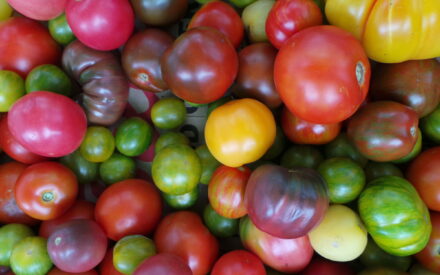 Homegrown Tomatoes for Wisconsin
Homegrown Tomatoes for Wisconsin


